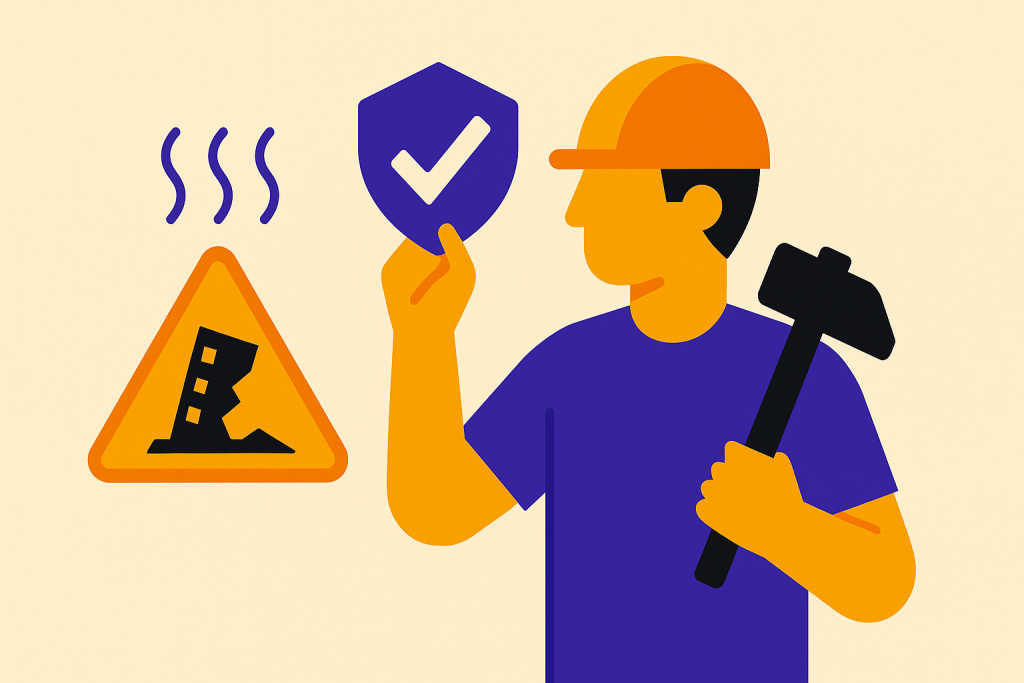
Demolition work is demanding. It’s not just about bringing structures down — it comes with serious risks that demand preparation, attention, and care. From sharp objects to unstable structures, every demolition job has unique hazards that workers need to be ready for.
Whether it’s interior, exterior, or full structural demolition, following safety protocols is critical. Here’s a practical guide to help you stay safe while getting the job done.
Common Risks in Demolition Jobs
- Structural Collapse: Weak or damaged walls, floors, and ceilings.
- Hazardous Materials: Lead-based paint, asbestos, and dust.
- Falling Objects: Debris from overhead work, loose materials, or tools.
- Sharp Edges: Nails, metal fragments, and protruding materials.
- Utility Hazards: Electrical lines, gas pipes, water, sewer, or steam lines.
Safety Checklist Before You Start
✔️ Check the Structure
- Brace or shore up damaged walls, floors, and ceilings before anyone enters.
- Evaluate stability — no one should be near collapse risks until the area is properly secured.
✔️ Utilities First
- Disconnect, cap, or shut off electrical, gas, water, sewer, and steam lines.
- Confirm with utility providers that everything is safely disabled.
✔️ Inspect Access Points
- Check all stairs, ladders, and walkways for damage.
- Make sure stairways and passageways are properly lit and safe to use.
✔️ Use Proper PPE (Personal Protective Equipment)
- Inspect PPE before every shift.
- Use the right gear: hard hats, gloves, safety glasses, dust masks, respirators, and steel-toe boots.
During Demolition: Safe Work Practices
🚧 Openings and Edges
- Guard wall openings with barriers at least 42 inches high.
- Cover floor openings securely — covers must handle any weight placed on them.
🚧 Material Disposal
- Openings in the floor for material drop shouldn’t exceed 25% of the total floor area.
- Use enclosed chutes with gates to safely direct debris to the ground or containers.
🚧 Work From the Top Down
- Always start demolishing from the top of the structure, moving downward.
- Never remove any structural supports until the floors above are fully removed.
🚧 Handle Decorative Elements Carefully
- Remove roof cornices, ledges, or other heavy decorative pieces before pulling walls.
Key Rule: Don’t Work Under Collapse Risks
If there’s any risk of structural collapse, no one should be allowed near it until the hazard is corrected with proper shoring, bracing, or support.
Final Tip: Safety Is the Job
Demolition isn’t just about tearing things down — it’s about doing it the right way, safely and efficiently. When safety is part of the process, work moves smoother, faster, and everyone goes home at the end of the day.